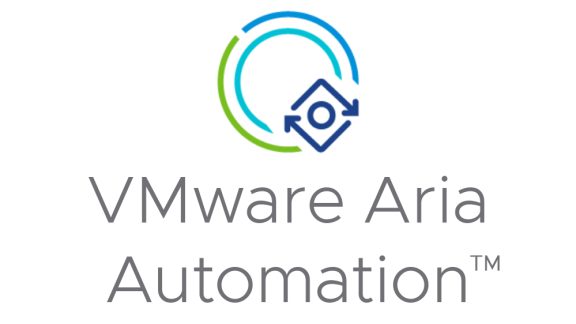You are well on your way to making your private cloud a reality… You have stood up the tools such as vRealize Automation, vRealize Operations and/or vRealize Business Standard, configured, tested, extended, tested, architected, and are ready to roll your new tools into production. As you progress though the final stages of your production roll out, your operations team asks the inevitable. How do we know this new thing is happy and healthy in our data center? How do we know if the services are available to consumers? What tests can we run to verify it really IS functioning? Until now, there was no easy answer to this! The vRealize Production Tool can help.
Introducing vRealize Production Test, or vRPT for short. Just released, this tool was created from the ground up by the Management BU Engineering Services Organization to help customers monitor their vRealize Suite tools in a production setting and ensure they are functioning as expected. This tool goes far beyond the ping or API tests that you may have had to rely on up to this point. It is a light-weight java based tool which can be downloaded from VMware Download site (see bottom of article) and configured very quickly to execute a cross-cutting selection of standardized tests in your environment. It can be installed and run from any machine with Java 1.7 or higher installed, and which has appropriate access to all of the hosts in your deployment.
vRealize Production Tool: Configuration
The vRealize Production Tool provides a simple user interface for generating a configuration definition. Once the configuration definition is created, it is used as input to the execution of test tool. Below are samples of the configuration needed to set up the tool for vRealize Automation, vRealize Operations and vRealize Business Standard. Don’t worry, those passwords are encrypted before they are saved in the configuration file!
The configuration tool is started using the following command line:
java -jar vrealize-readiness-1.0.0.jar -config
Once loaded, the UI has separate configuration tabs for vRealize Automation, vRealize Operations, and vRealize Business.
After entering your environment attributes, you need to save the configuration file by the Save button on each product configuration page. You will need to configure an output directory, under Settings, User Preferences, before you will be allowed to save your configurations. This is a required parameter when you execute the test in the next step.
vRealize Production Tool: Execution
The vRealize Production Tool is executed from the command line and directs feedback both to the console and to log files. Most of the time, you will likely want to execute all of the available tests by choosing the “-oobList” parameter. It is possible to specific exactly which tests you want to execute, but that will be covered more in another article.
The following command will execute all of the out-of-box tests:
java -jar vrealize-readiness-1.0.0.jar -run -oobList vRA -configDir
All test results will be printed to the screen as well as recorded in log files located in the “test-output” folder.
vRealize Production Tool: What is tested?
By now I’m sure you are wondering exactly what is checked, given they type of configuration information needed! Here’s an overview of the types of tests executed:
vRealize Automaton 6.1.x, 6.2.x
Certificates – ensure all certificates for all components are valid for all nodes
Endpoints – test connectivity to endpoints and initial data collection
Networks – tests connectivity between all vRA nodes
Reservations – sanity tests for all reservations and verifying compute resources
Service Status – confirms all CAFE services are properly registered
VAMI tests – verifies the configuration of the virtual appliance(s), including time synchronization, licenses and passwords
vRealize Operations 6.0.1
Sanity tests – basic validation of the vRealize Operations environment
Adapter Instances – test collection status for vROps instances
Solutions – check for pre-installed solutions
Cluster Deployments – verify status of related nodes of a cluster
Inventory Tree Filters – verify vCenter adapter tree filters are loaded
vCenter Inventory Objects – verify inventory sync with vCenter
Resource Metrics – verify a variety of metrics being collected
Certificate chain – test around SSL certificates between nodes in a cluster
vRealize Business Standard 6.0
Sanity tests – basic validation of the vRealize Business environment
System Health Status – validate sync between vRB and vCenter
vRealize Production Tool: Reporting
Once you have executed the vRealize Production Tool, basic test reports are generated in the test-output sub-folder, based on where the execution occurred. The following reports are generated:
test-output/index.html – HTML report page
test-output/testng-results.xml – Machine readable full output
test-output/testng-failed.xml – Machine readable failure report
test-output/juintreports/* – Failure reports in JUnit format
allure-results – Allure XML reports
The results from these test can be evaluated in in a number of ways, and then used to generate automated alerts related to the health of your vRealize tools. As an example, this tool is in use for the VMware Hands On Labs which use vRealize Automation, to ensure all service started up correctly when the vPOD boots up. During the startup, we execute the tests from Power CLI and the output is examined for failures, like this:
vRealize Production Tool: Getting it!
The vRealize Production Tool does not ship with any of the vRealize products out of the box, so that we can bring you more frequent updates and rapidly expand coverage. It does not require any additional licensing, so go to the VMware Download page now and download a copy for yourself!














